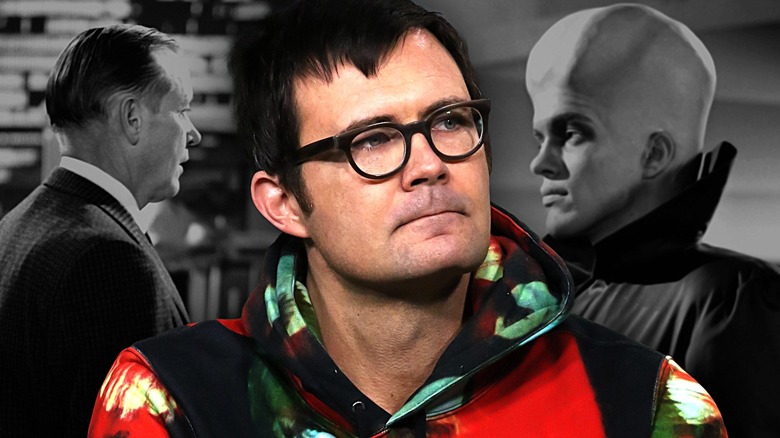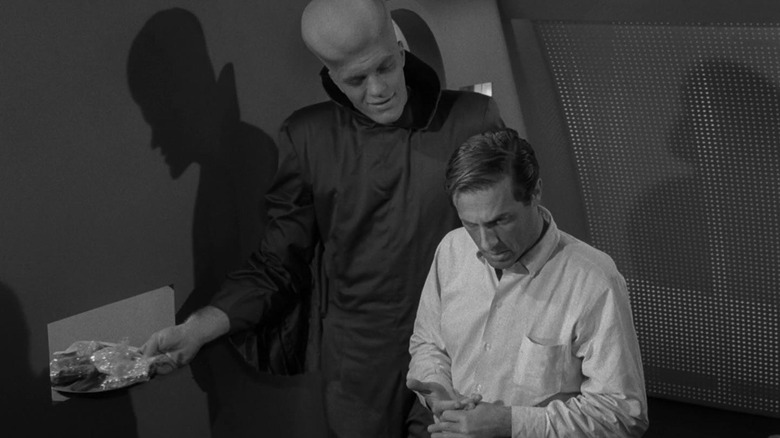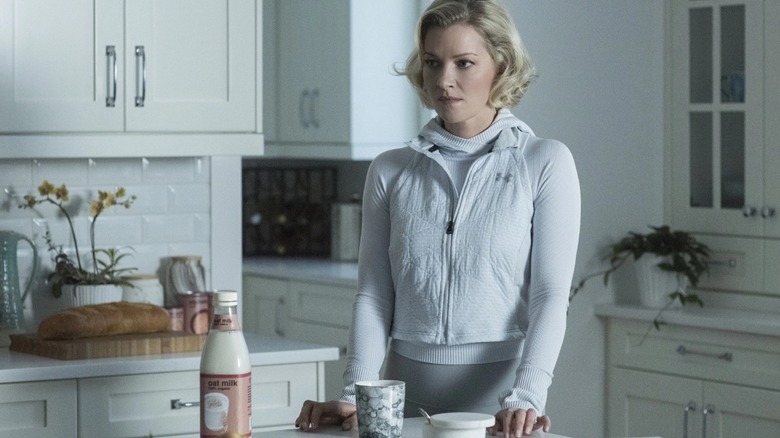
Can the arrival of aliens on Earth with seemingly altruistic intentions be trusted? Or is it a Trojan Horse, waiting for the right moment to launch an ambush? This is the fundamental question asked by “To Serve Man,” which is considered one of the most hard-hitting episodes of Rod Serling’s “The Twilight Zone.” When this episode aired on CBS in 1962, Serling’s show had already established itself as an anthology series with short, twisty episodes about supernatural or psychological phenomena that stemmed from the titular Twilight Zone. The original “Twilight Zone” TV show is steeped in both rich, compelling storytelling and a deep sense of nostalgia, and this mix is tough to recapture or replicate today. However, Jordan Peele took the initiative to do so with his 2019 “Twilight Zone” revival, which ran for two seasons and featured some intriguing episodic premises.
Peele’s approach to the property was a measured one. Thematically, his version of “The Twilight Zone” was designed as a direct response to the issues we face in the present-day, yet its best individual episodes still felt timeliness. However, Peele also understood that it was impossible to divorce the revival from the original series’ legacy, which is why he and his fellow creatives actively paid their respects to it. As a result, the revival included plenty of Easter Eggs referencing classic episodes from Serling’s “Twilight Zone,” and even went so far as to explicitly remake/pay homage to one particularly famous installment with “Nightmare at 30,000 Feet.” This proved to be a double-edged sword, as Peele’s “Twilight Zone” revival proved controversial for the way it blended nostalgic appreciation with inspired reinvention.
In addition to re-imaging episodes, Peele’s “Twilight Zone” revival also featured a “To Serve Man” sequel helmed by none other than writer-director Osgood Perkins (who knows a thing or two about building and sustaining fear in horror-coded stories). But in order to better understand Perkins’ sequel episode, “You Might Also Like,” we need to talk a little more about its predecessor first.
The Twilight Zone’s To Serve Man delivered an unforgettable twist
Spoilers for “To Serve Man” and its sequel, “You Might Also Like,” to follow.
Serling’s opening narration for “To Serve Man” introduces the Kanamits, an alien race with beings over nine feet and of unknown origin, who arrive on Earth during turbulent times. After the United Nations intervene, the Kanamit declare their intentions benevolent and voice their willingness to solve Earth’s food and energy crises by sharing advanced technology developed by their species. Despite their initial wariness, the people and governments of the world start to relax once a book the aliens left behind is deciphered as being titled “To Serve Man.” Over time, the Kanamits terraform Earth into vast, natural stretches, solve global issues, and help dissolve all military forces. However, the illusion of this utopia is shattered when the real intentions of the Kanamit are made known in one of the best “Twilight Zone” twist endings ever: “To Serve Man” is not some altruistic manifesto, it is actually a cookbook.
“To Serve Man” unfolds through the eyes of Michael Chambers (Lloyd Bochner), a cryptographer tasked with deciphering the book left behind by the Kanamits. Chambers represents a worrying human impulse: sloth, combined with the perennial refusal to think beyond self-serving desires. He is horrible at his job (an expert in doing absolutely nothing while pretending to do a lot) and is more obsessed with earning a ticket to the Kanamit home planet for recreational purposes. By the time someone else does his job for him and translates the book, though, it is too late. Michael’s carelessness has cost humanity everything; the people of Earth will soon become tasty little treats for an alien race who were essentially fattening pigs before the slaughter.
The episode’s pun-reliant twist is of the same variety as the famous Hannibal Lecter line “I’m having an old friend for dinner,” although the “Twilight Zone” makes it work by contrasting Michael’s darkly ironic fate with the tension accompanying the impending twist. So, how does Perkins reinterpret the Kanamit story in a sequel that sees the return of these conniving creatures?
Oz Perkins’ Twilight Zone sequel incorporates humor with mixed results
Perkins, who has directed bangers like “The Blackcoat’s Daughter” and “Longlegs,” knows how to make the most out of understated anxieties that linger at the edge of human consciousness. In “You Might Also Like,” this element is present throughout, where Perkins focuses on the smug apathy that the Kanamits exhibit in the original, bolstered by their (perceived) superiority over humanity. However, the episode completely leans into the absurd humor of the Serling episode, taking things a mile further with ironic product placements that underline humanity’s obsession with gadgets they do not need (but think will fix everything). Here, an affluent woman named Janet (Gretchen Mol) suspects that something is amiss after she loses time and has memory voids, and the arrival of an advertised Egg heralds the return of the Kanamits on Earth.
While “To Serve Man” focuses on the failure of the human race to anticipate its ruin, “You Might Also Like” satirizes rampant consumerism and how it prevents the masses from recognizing the most blatant moral traps. The Kanamits in the original episode employed guile to deceive the smartest people on Earth and played the long game to lure humanity into a false sense of inaction. In the sequel, such elaborate planning is not necessary, as the Kanamits can simply leverage late-stage capitalism to further their goals. One simply has to brand their queen’s Eggs as the next most coveted product that will drastically improve everyone’s lives. The why and the how is irrelevant when something so “life-changing” is 50 percent off.
The reception to Perkins’ approach was mixed, and it is admittedly a rather alienating episode. While it was an objectively better choice to not adopt a self-serious attitude for a sequel to a classic “Twilight Zone” episode, the tongue-in-cheek nature of the story feels skin-deep. There was an opportunity to dive deeper into the link between thoughtless consumerism and self-worth, how “being happy” is often a hollow performance for an audience, and how hobbies are constantly incentivized. Who are we even performing for? For better or worse, the episode offers no answers. Instead, it merely ridicules our dependence on “The Egg,” which promises to make everything okay again. Of course, it doesn’t.




Leave a Reply